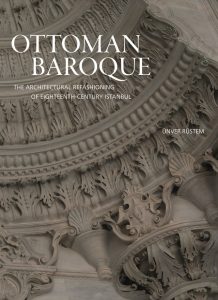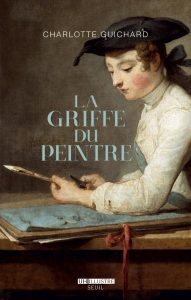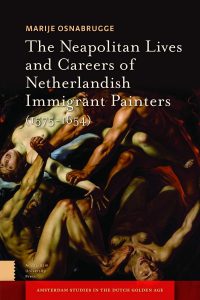CAA News Today
Committee on Women in the Arts (CWA) Picks: January/February
posted by CAA — Jan 31, 2022
The January/February “Picks” selected by the Committee on Women in the Arts reflect on the difficult pursuit of creative freedom through idiosyncratic yet careful explorations of color, form, genre, and medium as well as voice and address. The results are odd, anxious atmospheres that test reality’s bodily contours and lament the strange alienations and lurking injustices that constitute normalcy.
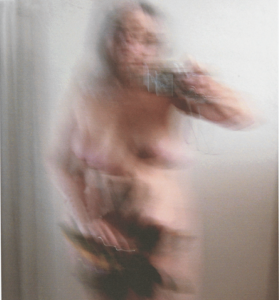
Joan Semmel, Untitled (Fem Folio), 2007, Digital Print, 12 x 12 inches, copyright©Joan Semmel/Artists Rights Society (ARS) New York
Mika Tajima: You Must Be Free
January 22 through March 12, 2022
Kayne Griffin, Los Angeles
From an early investigation into the regulatory and relational structures of human bodies in built environments, Mika Tajima’s recent work extends her inquiry into the conditions of human agency and self-determinacy. This exhibition focuses on the necessity and impossibility of freedom in our contemporary moment. The title, You Must Be Free, appears as an external command to achieve freedom and produces a contradictory tension that reveals a social limit to its practice. The speech act presents freedom as a pressing desire and controlling demand on the subject, underlining the entwinement of control and freedom. The animating force of this paradoxical directive is manifested in this exhibition as air pressure and its circulation through contained and porous objects and architecture.
Brittany Tucker: Burnout
January 8 through February 5, 2022
Steve Turner Gallery, Los Angeles, California
Burnout is a solo exhibition by Vienna-based Brittany Tucker featuring new large-scale loosely rendered paintings, half of which incorporate text that was spray-painted on in a street-tag manner. Tucker’s works of the past few years often juxtaposed a realistic likeness of the artist interacting with cartoon-like characters. In these works, her principal cartoon nemesis of the past, a smiling, often taunting white man, is featured in but one canvas, where he is spilling black paint off the bottom edge of the canvas. Hand prints and foot prints mark the background around him, but Tucker is otherwise absent from the scene. When Tucker’s likeness appears in other works, she appears to be uncomfortable, contorted, or obscured. According to the artist, these works represent her desire to shut out the world’s expectations of a Black female artist and to work more impulsively. As a consequence, they represent an unrestrained portrait of her psychological state as an expat living, working and studying in Vienna in which confusion, sadness, emotional fragility, self-reflection, honesty and ultimately courage and optimism are portrayed.
Joan Semmel: Skin in the Game
October 28, 2021 through April 3, 2022
Pennsylvania Academy of Fine Arts, Philadelphia, Pennsylvania
Joan Semmel: Skin in the Game includes approximately 40 paintings that show the remarkable continuity and assiduity of Semmel’s practice, and focus on four main themes—erotic abstraction; the self; expressive figuration; and photography and painting—that traverse five decades of work and reveal a strong counter narrative to the traditional telling of the history of painting in the United States from the late 1960s to today. Semmel’s work reflects the ongoing struggle for women’s equal representation and power to make decisions about their own bodies and sexuality while centering female empowerment through the self. In Semmel’s own words: “I do not pretend to address the problems of all women in the world. My work is personal and I speak for myself. Women artists have to speak for themselves and then unite to fight the political fight.”
Allison Katz—Artery
January 14 through March 13, 2022
Camden Art Centre, Arkwright Road, London
Attending to the idiosyncratic and eccentric, to personal mythologies and embodied experience, painter Allison Katz treats her own biography as source material, as well as drawing from dream objects, art historical references, and the texture of everyday life. Her exhibition unfolds through a series of biographical anecdotes and moments of synchronicity, opening the world up to a game of allusions, double entendre, slips and wordplay.
Emily: Desert Painter of Australia
January 21 through March 12, 2022
Gagosian, Paris, France
Emily: Desert Painter of Australia is the first solo exhibition in France of the work of Emily Kame Kngwarreye (1910–1996). Emily is unique among Indigenous Australian painters for her rapid and systematic exploration of different styles and for her bold inventiveness with regard to form and color. Over time, her mesmerizing early “dot” paintings ceded to more gestural canvases, reduced in their detail and liberated in their formal qualities. Until her death in 1996, she painted prolifically on both intimate and grand scale, with brushes, sticks, and fingertips on unstretched linen laid flat on the ground, sitting beside or within the composition itself
Laurie Anderson: The Weather
September 24, 2021 through July 31, 2022
Hirshorn Museum and Sculpture Garden, Washington D.C.
Laurie Anderson: The Weather is the largest-ever U.S. exhibition of artwork by celebrated multimedia artist Laurie Anderson. Spanning her groundbreaking video and performance works from the 1970s to recent years, the exhibition guides visitors through an immersive audiovisual experience in the Museum’s second-floor galleries. This dynamic survey showcases the artist’s boundless creative process by highlighting time-based media, including To the Moon (2018), a 15-minute virtual reality work, as well as the largest exhibition of her paintings to date.
Lucy Kim: Skin Might See
January 24 – March 5, 2022
University Gallery, UMASS Lowell
Skin Might See includes the first gallery showing of Kim’s Knife Paintings, as well as work from her Auto-Synthetic series. Kim is a visual artist who uses mold making and illusionistic painting to create hybrid objects that navigate the borderlands between painting and sculpture. She describes mold making and casting as a “sculptural surrogate for photography.” In both bodies of work there is intrigue in the tension between skin and cast surface. Curator Julie Poitras Santos wrote that in Kim’s oeuvre “the surface skin competes for visual primacy with the three dimensional form…“ These startling integuments often seem at odds with the kitchen accoutrements and other structures that lie beneath, creating a frisson and a place of interrogation between media and meaning.
CWA Picks: December
posted by CAA — Jan 05, 2022
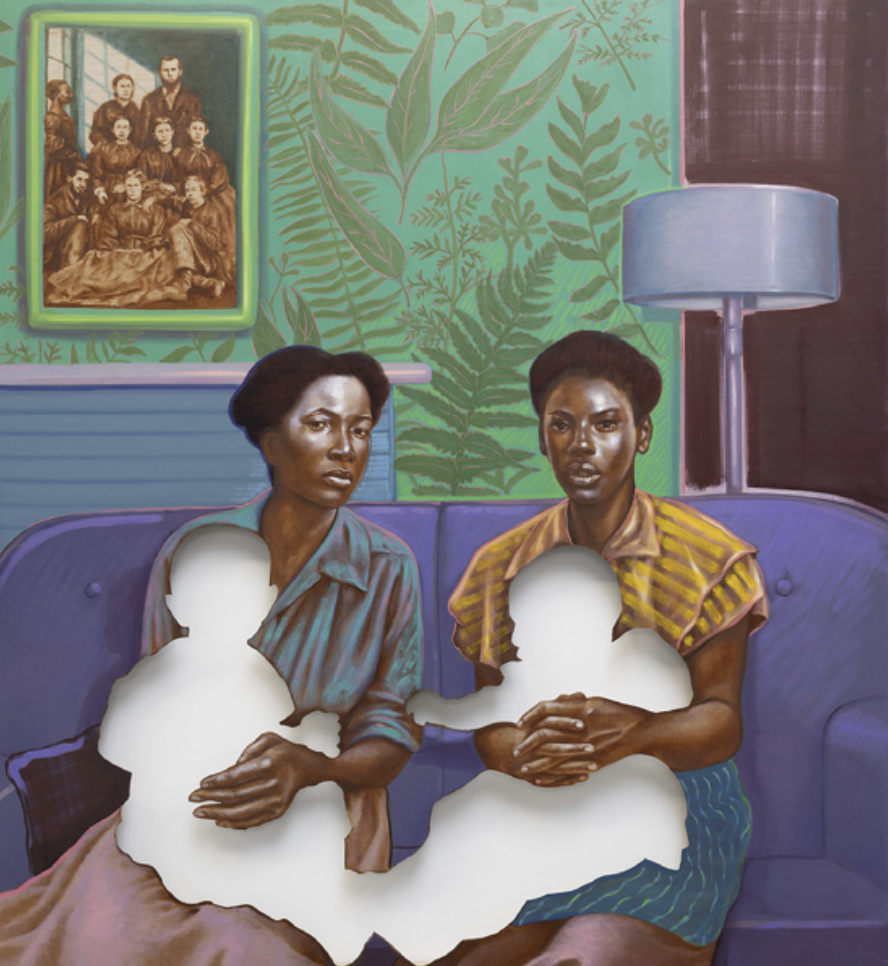
Not My Burden, 2019. Titus Kaphar (American, b. 1976). Oil on canvas; 167.6 x 153 cm. © Titus Kaphar. Image courtesy of the artist and Gagosian. Collection of Ellen Susman, Houston, Texas. Photo: Rob McKeever
The December “Picks” of exhibitions and opportunities from CAA’s Committee on Women in the Arts focus on the notion of lineage both as a subject matter and as a framework in which the featured artists are in dialogue. The following artists look back as they look forward, exploring the ways in which memory and history are intertwined with our present.
BY HER HAND: ARTEMISIA GENTILESCHI AND WOMEN ARTISTS IN ITALY, 1500 – 1800
September 30, 2021 – January 9, 2022
The Wadsworth Atheneum Museum of Art
By Her Hand presents a diverse group of female artists working in Italy during the 17th century from the celebrated Artemisia Gentileschi to her lesser-known contemporaries. While female artists played an important role in the male-dominated art world of their time, their success and contributions have historically been overlooked.
Frida Kahlo: POSE
June 25, 2021 – January 2, 2022
Rose Art Museum
Frida Kahlo: POSE includes contemporary art from the Rose permanent collection alongside pieces by Kahlo marking her significant influence and legacy. The exhibit is organized into five sections: posing, composing, exposing, queering, and self-fashioning. Each segment presents the revolutionary work of an artist who explored identity on an incredibly intimate and vulnerable level.
Picturing Motherhood Now
October 16, 2021 – March 13, 2022
The Cleveland Museum of Art
Picturing Motherhood Now represents a varied and intergenerational story of motherhood. Many of the exhibiting artists connect the experience of motherhood with other social issues including class, the history and impact of slavery, gender, migration, and indigenous cultures. While much of the work was created in the past two decades, the exhibit also highlights artists from the mid-twentieth century.
Georgia O’Keeffe, Photographer
Through January 17, 2022
Museum of Fine Arts, Houston
Georgia O’Keeffe, Photographer, now on view at the Museum of Fine Arts, Houston shares the previously unexplored photographic work of this iconic artist. About one-hundred photographs are included, alongside many of her paintings and drawings, and providing a rich survey of her artistic practice.
Josephine Halvorson
October 1, 2021 – March 28, 2022
Exhibition featuring the Georgia O’Keeffe Museum’s first Artist-in-Residence
Josephine Halvorson, a painter from Massachusetts, was the first Georgia O’Keeffe Museum’s Artist-in-Residence in 2019. Halvorson is currently exhibiting work she created in response to the landscape surrounding O’Keeffe’s homes as well as the personal collections that filled those homes at Ghost Ranch and in Abiquiú, New Mexico, and at the Museum in Santa Fe. This exhibition will be on view in Gallery 3 from October 1, 2021 to March 28, 2022.
Barbara Deming Memorial Fund
The application period is January 1 – 31, 2022 for Visual Art, Fiction, and Mixed Genre.
Money for Women is the oldest ongoing feminist granting program and disperses funds to feminist writers and visual artists on a yearly basis. In this grant cycle, the foundation is seeking applications from visual artists, fiction writers, and mixed genre creators.
Committee on Women in the Arts (CWA) Picks: November
posted by CAA — Nov 29, 2021
The November “Picks” from the Committee on Women in the Arts explore spaces between the human figure and its psychic figurations. Each artist featured in the exhibitions traces the vacillations between interior perceptions and the objective contours of an external world eroded by alienation and violence. Whether they draw from traditional genres or experiment with new media, these artists destabilize the grammar of recognizable forms to reveal the vulnerability of human subjectivity and test the possibilities for repair.
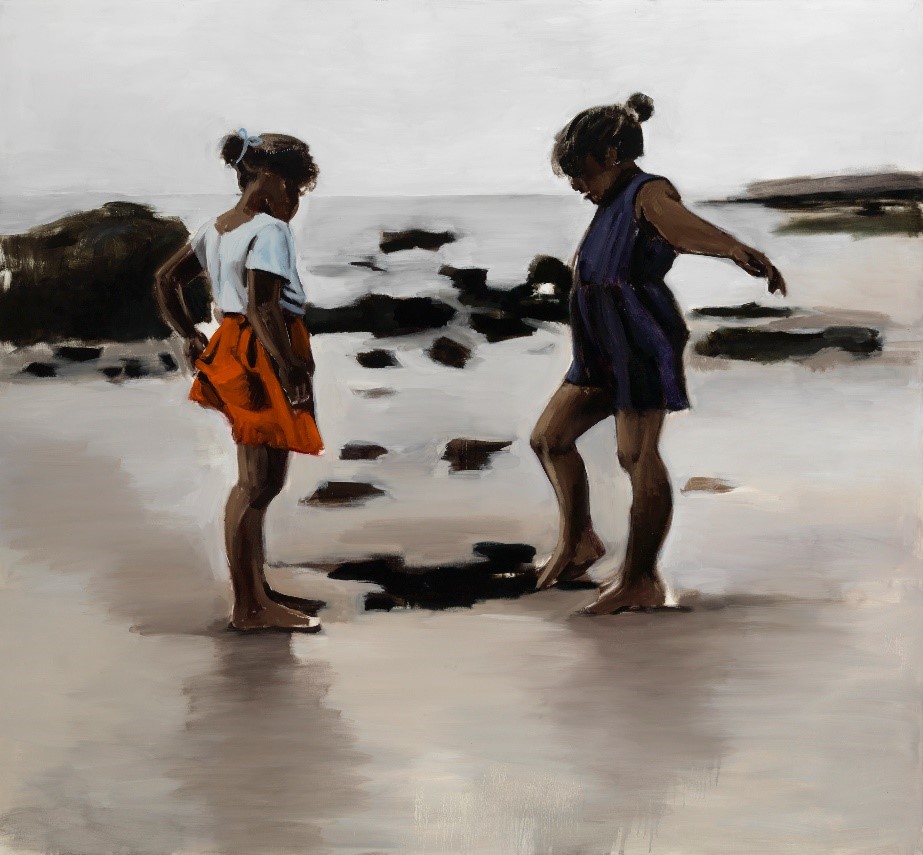
Lynette Yiadom-Boakye, Condor and the Mole, 2011, Arts Council Collection, Southbank Centre, London © Courtesy of Lynette Yiadom-Boakye.
Lynette Yiadom-Boakye: Fly in the League with the Night
October 16, 2021-February 13, 2022
Kunstammlung Nordheim Westfalen, Düsseldorf, Germany
Lynette Yiadom-Boakye paints portraits to evoke the psychic depths of Black subjects while gently keeping them from the demand for full exposure. The fields of rich colors and soft, slightly loose brush strokes in which Yiadom-Boakye holds her sitters allow her paintings to pulsate with an elegance that is tangible but difficult to pinpoint, though it seems to emerge from the value the artist attributes to seeing as a private act. One painting featured in this exhibition, Condor and Mole (2011), seems to illustrate the mysterious camaraderie indicated by the title of the exhibition and links it to the veils of privacy Yiadom-Boakye brings to the painted image . Condor and Mole portrays two Black girls on a beach punctuated with dark rocks; the tide pulls their shadows into tan and blue-grey sheens that continue into the horizon line. The girls are turned to each other as they look down into a dark crevice in the sand. Viewers do not see what they are looking at, and Yiadom-Boakye portrays the playful attunement of their collaboration, expressed through the correspondence of their body language, without providing full access to their shared vision.
Ana Torfs, Dark Spaces Where Things Cannot Be Put
January 10, 2021-February 27, 2022
Museo Universitario Arte Contemporáneo
México City, México
Ana Torfs is an artist based in Belgium and Dark Spaces Where Things Cannot Be Put is her first solo exhibition in the Americas. Working with an idiosyncratic array of materials and sources, Tors makes her subject the contingency of visual perception and the unstable connections among images, words, and knowledge. How do words determine what becomes visible to us? For Tors, this is an aesthetic, historical, ethical question that takes her work into contexts of great consequence. The installation The Parrot and the Nightingale, a Phantasmagoria (2014) exemplifies her interest in language, translation, and power. In it, Tors draws from Christopher Columbus’ travel diaries to provoke reflections on linguistic alienation, curiosity, order, and repression. In dialogue with 81 black-and-white images of tropical nature, Tors presents a female interpreter translating an English version of Columbus’ diary into American Sign Language and then three male interpreters bring the text back to a spoken English fractured with error. The “original” diary and its exploratory record recedes further from vision and the connection to the photographs becomes even more unstable, but Tors suggests that the damage imperial encounters remain. The female translator in The Parrot and the Nightingale, a Phantasmagoria points to the stealth feminism running through Tors’ artwork and her attention to the long histories of depriving women access to the voice of authority. The installation Echo’s Bones/Were Turned to Stone (2020), a carpet overlaid with a recording of a woman speaking in an endless chain of associations, suggests that this gendered displacement into irrationality forces women to carry the deaths embedded in and covered over by sensible, rational language.
November 25, 2021-July 3, 2022
Tate Britain, London
The winner of the 2017 Turner Prize, Lubaina Himid is well-known for her impact on the Black British art movement and her innovative depictions of everyday life in the Black diaspora. This Tate exhibition features Himid’s recent work as well as selected highlights from her influential oeuvre, focusing in particular on her interest and training in the theatre. With vivid colors that appear within slightly unsettling arrangements of geometric forms, Himid stages mise-en-scènes that reflect on diasporic imagining, building, and making. These qualities are evident in Six Tailors (2019), a painting in which Himid has arranged six men of African descent around a table covered in bright turquoise blue. The fabric, scissors, and spools thread with which they work materialize the colored and textured worlds they are in the process of making, which sharply contrasts the painting behind them that depicts the sky and sea as flat gray horizontal lines. Himid’s work as a painter is figured into this meditation on making and registers the losses that compose it.
Pipilotti Rist: Big Heartedness, Be My Neighbor
September 12, 2021-June 6, 2022
Geffen Contemporary, Museum of Contemporary Art, Los Angeles
The first West Coast survey of Pipilotti Rist’s work reveals how much her Pop-friendliness fits with Los Angeles. The playful eroticism, love of sparkle and shine, and hyper femininity that are the Swiss artist’s stylistic signatures all resonate with the city’s central place in the fantasy of making dreams come true. Of course, a dark cruelty lurks within this fantasy, and it therefore makes sense that despite the generosity alluded to in the exhibition’s title, Big Heartedness, Be My Neighbor also reveals the artist’s affinity with figures such as Lynn Hershman Leeson and David Lynch. Surveying more than thirty years of her work, this exhibition highlights Rist’s talent for stretching video to its extremes with scale, color, and sound. For her, video is a threshold into a rich and elastic imaginary that lets interiors and exteriors flow into each other and announces the desire for big-hearted connections.
October 1, 2021-July 10, 2022
Brooklyn Museum of Art, Elizabeth Sackler Center for Feminist Art
Baseera Khan recently received the UOVO Prize for an emerging Brooklyn artist, and with an aesthetics of distortion pushed to theatrical extremes, they make their body a site for realizing spaces of disjuncture between Muslim and American identities. All of Khan’s artworks collage together a struggle with the archive of commodified objects, images, and materials through which Muslim Americans are perceived. Khan’s I Arrive in a Place with a High Level of Psychic Distress (Blue) (2021) encapsulates this struggle and crystallizes the meaning of the kaleidoscopic layers that are a predominant feature of their work. In this photograph, brown hands and legs adorned with silver chains, bracelets, and rings emerge from behind the broken fragments of painted floor tiles. It is a beautiful and violent fight to “arrive in a place,” but also a challenge to the conditions of raced and gendered visibility that materialize on the terrain of the image.
Yoko Ono: Mend Piece for London
August 25, 2021-January 2, 2022
Whitechapel Gallery, London
Yoko Ono’s Mend Piece for London consists of two plain white tables upon which she has placed broken cups and saucers as well as instruments of repair: scissors, glue, twine, and tape. In her instructions she states, “Mend carefully/ think of mending the world/ at the same time.” A gentle reassertion of her central place in the Fluxus tradition and its continued pertinence, Ono also draws from the Japanese tradition of Kintsugi, in which broken pottery is repaired with lacquer mixed with precious metals and silver. Mend Piece for London also exemplifies Ono’s irrepressible commitment to reaching people with her aesthetics of repair and inspiring them to create and hold an image of a peaceful world in their minds so as to thoughtfully cohere all its broken pieces.
Jennifer Packer: The Eye is Not Satisfied with Seeing
October 30, 2021-April 17, 2022
Whitney Museum of Art, New York
The Eye is Not Satisfied with Seeing features 30 artworks Jennifer Packer has produced over the last decade. Emerging from a historical period in which visual media testifies to the state-sanctioned murder of Black people, Packer explores the psychic states and experiences that exceed visual evidence with a lyrical and melancholic vision. Layered with swaths of bright color, discordant fragments, blank spaces, and the weeping lines of vertical drips, Packer’s paintings and drawings are both heavy and light, private and revelatory, understandable and illegible. It seems that for Packer, traditional genres are tools for containing chaotic feelings, giving them form, but also evoking what has yet to be expressed. The still life Say Her Name (2017) is Packer’s response to the 2015 murder of Sandra Bland. The flowers, leaves, and stems of this painted funerary bouquet, loosely suspended before an unstable background of yellow and black, becomes a scrim that evokes the intimacy of identification and the reality of death’s irrevocable distance.
In Memoriam: Julie L. Green
posted by CAA — Nov 04, 2021
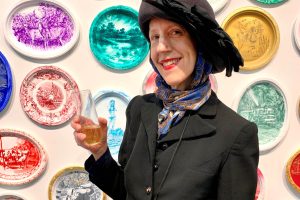
Artist Julie Green in front of one of their pieces in The Armory Show 2020, which included a salon-style presentation of Fashion Plate works, painted on Chinet plates and platters. (Photo by Theo Downes-Le Guin/Upfor Gallery)
Artist and educator Julie Green died at home on Tuesday, October 12, 2021. Green (who preferred gender neutral pronouns) was diagnosed with ovarian cancer nearly two years ago.
Julie Lynn Green was born in 1961 in Yokosuka, Japan to Frederick William (Bill) Green and Jane Green. Green’s birth wasn’t without excitement: their father was airlifted by helicopter off a Navy ship to support Jane during pregnancy complications. Both mother and child were fine. As a child, Green lived in Washington State, Ohio, New Jersey, Illinois, and Iowa, where they attended Des Moines Roosevelt High School, graduating in 1979. From an early age, Green shared their mother’s passion for creative projects, thriving as an artist and performing with a high school mime group. One of Green’s favorite pastimes was to play Scrabble with grandmother “GrandMary.” In 1995, Green married longtime partner Clay Lohmann, who encouraged a lifelong interest in yoga and expanded Green’s artistic pursuits.
Green wrote that they wanted to be a stewardess until age four, but became a painter instead. Green received a B.F.A. and M.F.A. from The University of Kansas, studying with noted artist Roger Shimomura, who remained a lifelong mentor and friend. Green joined the faculty at Oregon State University in Corvallis, Oregon in 2000 as a professor in the Art and Art History Department. While garnering admiration and affection from a generation of students, Green also maintained an active studio practice. Green started their best-known work, a series of paintings on second-hand plates depicting the last meal requests of death row prisoners titled The Last Supper, in 2000. A few weeks before their death, Green decided to end the project at 1,000 plates. The first 800 plates are currently on view at the Bellevue Arts Museum in Bellevue, Washington.
Green worked in a variety of mediums but identified primarily as a painter, often combining humble materials and techniques with art historical traditions. Green painted on linens, Tyvek, and Chinet-brand paper plates as well as paper and canvas, with pigments from sources as diverse as industrial waste byproducts, rare earth elements and 7UP. Awarded a Hallie Ford Fellowship in the Visual Arts from The Ford Family Foundation, Green’s accolades also included grants and fellowships from the Oregon Arts Commission, the ArtPrize 3-D Juried Award, and a Joan Mitchell Foundation Painters and Sculptors Grant. Green’s work was featured in a variety of publications and programs including The New York Times, Rolling Stone, NPR, and PBS, and was exhibited widely in museums and galleries throughout the United States. Green’s final public exhibition in their lifetime, at The Armory Show in New York in 2020, garnered the Presents Award.
Green was preceded in death by their father Frederick WIlliam Green. Green is survived by their husband, artist Clay Lohmann, brother Scott Green, and mother Jane Hamilton.
–Theo Downes-Le Guin and Scott Green
CWA Picks: June 2021
posted by CAA — Jun 29, 2021
The June Picks from the Committee on Women in the Arts highlight a selection of events, exhibitions and calls for work that include feminist and womxn artists, and address issues about social justice, the visibility of marginalised subjects, and the digitisation of the everyday. Several of the exhibits engage with the question of relations among the human, non-human and other-than-human bodies but also corporeal entanglements that embed us within the world through embodied experiences.
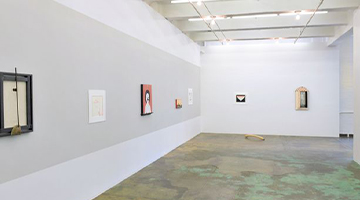
“Anne Minich: Her Bone” installation view of interior gallery
Anne Minich, Her Bone
May 22 – June 26, 2021
Thomas Erben Gallery
This solo exhibition of the Philadelphia-based artist Anne Minich engages with the materiality of the human body. Working across different media Minich explores the themes of pleasure and sexual desire, memory and intimacy, to develop personal mythologies and question the boundaries of corporeality. Her transversal language emphasizes the lived experience of being in the body, living it and dying in it. The works reveal multiple kinships and invite a closer inspection of bodily experiences. The interrelationality is emphasized by unexpected juxtapositions between the media used by Minich, including drawings, wooden sculptures and three-dimensional paintings, and found objects such as shells, fruit pits or bones. Intimate and fragile, these painterly collages invite the viewer to feel and sense with.
Susanne M. Winterling, TEMPERATE – under your skin, nano carriers through the web of life
May 20 – September 19, 2021
Schering Stiftung
Susanne M. Winterling’s installation TEMPERATE confronts the viewer with a fluorescent bacterium, inviting us to engage with nano-organisms that are invisible to the naked eye. Questioning that which is visible and that which remains invisible, the artist created large projection surfaces that show the bacterium moving across scientific images. Playing with scale, Winterling offers us another perspective in which magnified nano-organisms are larger than the visitors, articulating complex relationships between humans and microorganisms and interrogating the relevance of anthropocentric views. Inspired by research on drug-loaded nanocarriers, Winterling collaborated with Simone Schürle, a biomedical engineer and professor for Responsive Biomedical Systems at ETH Zurich along with her research team to bring awareness to the productive relations between forms of life and specifically bacteria equipped with therapeutic agents.
SHILPA GUPTA: Today Will End
May 21 – September 12, 2021
M HKA – Museum of Contemporary Art Antwerp
Shilpa Gupta’s multimedia works bring visibility to the contemporary art scene in Mumbai Critically engaged with identity politics and psychological discourse, Gupta articulates relationships between human diversity and new aesthetics, exploring entanglements between subjectivity and perception often via interactive installations and audio and visual technologies. Context-related and referring to specific cultural and socio-political framings, her works concern themes that, at the same time, are open to interpretation and may become localised to develop new micro-narratives. Gupta’s interest in conflict, borders and censorship can be seen in this exhibition, in which the artist traces the role of diverse media in the production of fear.
Hito Steyerl. I will survive. Physical and virtual spaces
May 19 – July 5, 2021
Centre Pompidou
This exhibition of Hito Steyerl’s major works is a retrospective in reverse, showing the most recent pieces at the beginning, which then lead to the artist’s 1990s films displayed at the end of the show. It is a collaboration between Centre Pompidou and the K21 Düsseldorf. The multimedia installations, some of which have been designed specifically for the exhibition, are a satirical and critical gesture exploring the relationships between the digital worlds, artistic creativity and its presentation, the pandemic and current social conditions. Steyerl’s point of departure is the architecture of the Centre Pompidou, which for over forty years has supported the heritage mission of the museum as a democratic project of a cultural resource centre. Steyerl engages once again in an intimate and astute manner with the invisible contradictions that drive the power structures of global capitalism and interrogates the challenges encountered by cultural institutions in the current moment of crisis.
AD MINOLITI: Biosfera Peluche / Biosphere Plush
July 24, 2021 – May 8, 2022
BALTIC Centre for Contemporary Art
The exhibition of works of Ad Minoliti, a contemporary Argentine artist, takes place in the Baltic in the form of an ‘alien lounge’. Imagined as an extra-terrestrial space that goes beyond the idea of nature, it traverses dichotomous gender and anthropocentric narratives exploring non-binary and non-human identifications and embodiments. This first institutional presentation in the UK and the largest exhibition to date in Europe also features Minoliti’s ongoing project The Feminist School of Painting, which transforms part of the gallery space into an active classroom holding bi-weekly painting workshops. In her practice Minoliti activates feminist and queer theory to deconstruct the traditional genre of painting and art historical narratives, and generate alternatives that are intersectional, inclusive and diverse.
A Yellow Rose Project
June 1 – September 15, 2021 (virtual tour available)
BU Art Galleries
A Yellow Rose Project, a collaborative photography project between women from the United States, was initiated in 2019 to mark the 2020 centennial anniversary of the ratification of the 19th Amendment. On that day women wearing yellow roses, symbolising the fight for equal representation, gathered into a concerted bodily collective and waited to hear if their right to a voice in the government would finally be granted. The photographs in the project engage with the complicated narratives attached to the 19th Amendment and its anniversary, and confront a multitude of histories, some of which are more visible than others. A remarkable historical event to celebrate also marks a troubling moment when only some women were given the right to vote. The collection of visions and voices opens up a dialogue on the power of the movement that led to the ratification, but also on erasures and the need to remember. The presented body of work celebrates women’s resilience and bodily gestures, including the gesture of the taking a photograph, that create a visual archive of vulnerability that through a concerted collective effort becomes a strength in the common.
Photo Vogue Festival 2021: REFRAMING HISTORY Open Call
Who is telling the story? The 6th edition of the Photo Vogue Festival ‘REFRAMING HISTORY’ invites projects that propose an alternative, different way of telling a tale. Selected projects will be featured in the exhibition.
In Memoriam: Robert L. Herbert
posted by Allison Walters — Dec 22, 2020
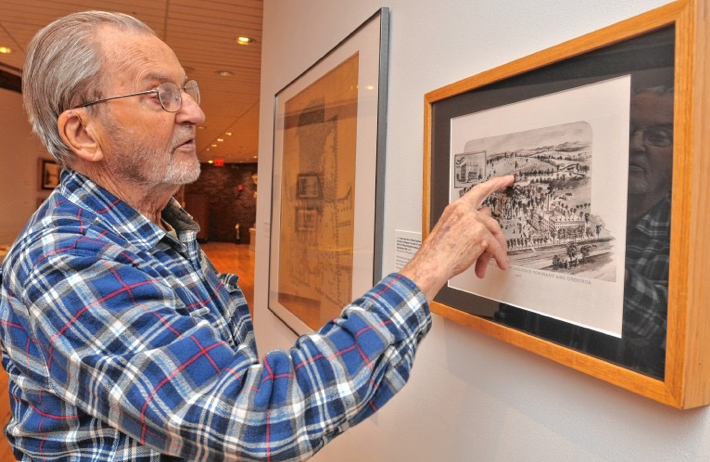
Robert L. Herbert
We are saddened to learn of the passing of Robert L. Herbert, a visionary in art history and extraordinary teacher to many. He received CAA’s Distinguished Lifetime Achievement Award for Writing on Art in 2008. He passed December 17 of a stroke at 91.
Robert L. Herbert
In an extraordinary career spanning more than sixty years, Robert L. Herbert was remarkably consistent in a practice that has come to define the social history of art, which he described as “the moral and passionate … search for what paintings and drawings meant in the artists’ time.”1
As an undergraduate at Wesleyan University in the late 1940s and early 1950s, he was fascinated by the history of science, an interest that encouraged his study of color theory in his dissertation on the nineteenth-century French artist Georges Seurat, completed at Yale University under the direction of George Heard Hamilton in 1957. By that time, Herbert had already been inspired by the work of Meyer Schapiro, who encouraged his lifelong commitment to socialism as a framework for political and intellectual development. Proud of his roots in a working-class New England family, Herbert resisted the formalist bias of his training, although he readily acknowledges a debt to those who taught him to look carefully at works of art and to appreciate the importance of technique and pictorial structure. From the beginning he always insisted that “the stuff of ordinary daily life should enter into art history,” and made it his goal “to restore the flesh of real painters and their culture to the bones of style and form.”
A desire to balance respect for the artist’s distinctive modes of representation with a socially and historically grounded reading of subject matter was a salient feature of Herbert’s research, which focused, for example, not only on the color and facture of paintings by Seurat and other Neoimpressionist artists, but also on the distinctive subject matter and the politics of their art. Recognizing that the prevailing view of Seurat tended to privilege his large-scale paintings, Herbert trained attention on his drawings in a book published in 1963; yet he also continued to explore the meanings of Seurat’s paintings, organizing a major retrospective exhibition on the hundredth anniversary of the artist’s death in 1991 as well as another, Seurat and the Making of “La Grande Jatte,” that was devoted to his most celebrated painting in 2004. In fact, many of Herbert’s most innovative and important contributions to the history of art have been made in the context of exhibitions, which require careful attention to individual objects in addition to the presentation of a unifying conception of the whole. For his first foray into this genre of scholarship, the 1962 exhibition Barbizon Revisited, Herbert wrote a catalogue that won CAA’s Frank Jewett Mather Award and precipitated a renewed appreciation of the work and historical significance of mid-nineteenth-century landscape painters such as Corot, Millet, and Rousseau, among others. His ambition for the exhibition was expressed in terms that convey his dedication to a particular kind of art-historical practice: “The purely historical treatment of art is bloodless. The real heritage of Barbizon art is in the paintings, and their vitality must be experienced in our viscera. Otherwise works of art are documents to be assessed, catalogued, and filed away. But there is a proper use of history, namely, to prod us into discoveries which release our imagination and permit us to rise to the realm of true poesis. An historical evaluation of Barbizon art will only have value if it succeeds in doing just this.”
Just as the study of Seurat’s drawings prompted Herbert to look carefully at Millet’s drawings and other work in articles and exhibitions of the 1960s and 1970s, so Seurat’s paintings eventually led him to the work of Fernand Léger, whom he considers to be Seurat’s descendant and a great practitioner of the craft of painting. Thus although Herbert’s scholarly reputation is bound to his work on nineteenth-century French painters—he has written books on Monet and Renoir, a survey devoted to the leisure subjects of the Impressionists, as well as the publications mentioned above on Seurat, Millet, and the Barbizon School—he has also produced significant scholarship on early-twentieth-century modernism. His first contribution to that field was an edited volume of ten essays, Modern Artists on Art, published in 1964. This was followed twenty years later by a detailed study of the large, diverse collection of European and American modernist art from the Société Anonyme that Katherine Dreier had bequeathed to Yale at midcentury and that Herbert had explored for many years together with his students. Along the way, Herbert developed research he had undertaken as a graduate student into a book, published in 1972, on David’s Brutus and its political significance in the context of the French Revolution; his commitment to the social history of art was also evident in a volume of selected art criticism by John Ruskin that Herbert edited in 1964 and for which he wrote an eloquent introduction that provided a thoroughgoing reevaluation of Ruskin’s significance from a variety of perspectives, demonstrating his acute relevance to the social history of art that Herbert was in the process of articulating at the time.
It is impossible to summarize Herbert’s contributions to art history simply in terms of his scholarly production, impressive as that output has been. He has also been an inspiring teacher of undergraduate and graduate students, setting an example in countless ways that go well beyond his commitment to scrutinizing original works of art alongside archival resources of the most diverse kinds. In addition to imparting these indispensable staples of the trade, he maintained an extraordinary level of personal and professional engagement with his students, loyally supporting their ambitions and celebrating their achievements, whether large or small. Refusing to be impressed by conventional measures of status, in 1990 he acted on his commitment to feminism by relinquishing his position at Yale in order to join his wife, Eugenia Herbert—whom he has always described as his greatest intellectual companion—on the faculty of Mount Holyoke College.
As professor emeritus and living in South Hadley, Massachusetts, he discovered a passionate interest in the life and work of a mid-nineteenth-century female botanist and illustrator named Orra White Hitchcock. “I’ve taken the plunge,” Herbert has remarked, “into the world of American women’s diaries, into travel diaries, and into the history of geology and the natural sciences, embraced in the broader spectrum of American social and cultural history of the middle third of the nineteenth century. It’s a new world for me, and I have no regrets at giving up French art history!” Subsequently he turned to exploring the history of Mount Holyoke and curated several exhibitions with James Gehrt and Aaron Miller.
He died December 17 of a stroke at 91 and is survived by his wife of 67 years Eugenia (Fi); children, Tim, Rosie, and Cathy; their mates, Mara, John and Chris; six grandchildren, and a wealth of friends to whom he was immensely devoted as well.
CWA Picks for July 2020
posted by CAA — Jul 28, 2020
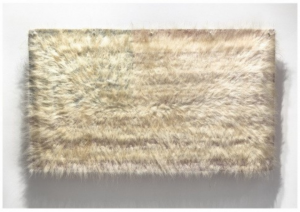
Sonya Kelliher-Combs (Native American, b. 1969) Mark, Polar Bear, 2019. Acrylic polymer, polar bear fur, fabric flag, metal brackets, 40 x 65 in. © 2019 Sonya Kelliher-Combs. Courtesy of the artist and Minus Space.
In response to COVID-19, artists, institutions, and organizations have initiated virtual exhibitions, presentations, screenings, and curated newsletters, among other innovative approaches, welcoming the public to online platforms and opening dialogues on a range of topics. May and June 2020 CWA Picks presented a number of initiatives that demonstrated ways in which social media channels and websites can be repurposed in light of social distancing measures currently in place; these Picks emphasized the social role of the arts as a healing positive force during these challenging times. As protests about systemic racism and structural injustices raged globally, museums and institutions were inclined to acknowledge their fundamental accountability and engagement in the misrepresentation or excision of Black and Indigenous histories from white imperialist and colonial narratives, including the prevalent or implicit use of racist language and practices. As the world witnesses and participates in “good trouble” and social unrest, our July Picks cover a range of online and in-person exhibitions and events and strike a balance between feminist ecologies of care and political activism. At this unprecedented historical juncture, some art spaces have opened their doors to audiences and slowly resumed activities, enforcing precautions and timed visits:
- ecofeminism(s) curated by Monika Fabijanska at Thomas Erben Gallery (7.19.20-7.24.20) takes us on a visual journey of the pioneering environmental art works of the 1970s and 80s through the present. Countering patriarchal and corporate structures and philosophies, many artists engage scientific and analytic approaches to experimental practices, utilizing photographic documentation, archives, time-based media, and ritual performances. Advancing principles of spiritual feminism, feminist metaphors of the Great Goddess and Cosmic Mother, and anti-nuclear activism, among other social and technological positions, the early eco–feminists underscore earth’s fragility and vulnerability—thinly veiling our fears and prophetically imagining our current global crises and pandemic—yet glimmers of care, community, and agency strikingly emerge. As an intergenerational show presenting contemporary women artists making ecological art, Fabijanska proposes, “What makes today’s female environmental artists ‘ecofeminists’?” Artists include Andrea Bowers, Helène Aylon, Eliza Evans, Sonya Kelliher-Combs, Hanae Utamura, Betsy Damon, Aviva Rahmani, Jessica Segall, Lynn Hershman Leeson, Bilge Friedlaender, Carla Maldonado, Mary Mattingly, Cecilia Vicuña, Barbara Kruger, and Agnes Denes. Public programming with Zoom conversations between artists, art historians, and critics: July 8, July 15, and July 22.
- Earthkeeping, Earthshaking – art, feminisms and ecology (Earthkeeping/Earthshaking – arte, feminismos e ecologia), curated by Giulia Lamoni and Vanessa Badagliacca at Galerias Municipais (Galeria Quadrum) in Lisbon (7.25.20-10.4.20) takes its title from the thirteenth issue of the pioneering US feminist art magazine called Heresies (1981) published by the feminist collective. Lucy Lippard, Ana Mendieta, and Faith Wilding, among other contributors to this issue, raised complex points around the following question: ‘What can women do about the disastrous direction the world is taking?’ Curators Lamoni and Badagliacca return to this pressing question in a global 21st-century context by reframing ideas of capitalism, colonialism, and current environmental pressures, further exploring a Portuguese perspective. Earthkeeping, Earthshaking presents radical feminist artists from the 1970s through the present day: Alexandra do Carmo, Alicia Barney, Ana Mendieta, Bonnie Ora Sherk, Cecilia Vicuña, Clara Menéres, Emilia Nadal, Faith Wilding, Gabriela Albergaria, Gioconda Belli, Graça Pereira Coutinho, Irene Buarque, Laura Grisi, Lourdes Castro. Maren Hassinger, Maria José Oliveira, Mónica de Miranda, Rui Horta Pereira, Teresinha Soares, Uriel Orlow.
- AWARE (Archives of Women Artists Research & Exhibitions) has launched the podcast Woman House in response to the pandemic. Each episode invites a female narrator to read stories and texts by women writers on the broad theme of confinement. For example, hear Virginia Woolf’s To the Lighthouse read by Julie Wolkenstein; Céleste Albaret’s Monsieur Proust read by Jeanne Balibar; and Marguerite Dumas’s Writing read by Camille Morineau.
- Virtual Views: Faith Ringgold at MoMA explores Ringgold’s extraordinary position in the sixties as an African-American woman painter and offers personal commentary about cultural identity and documentation during the civil rights movement. Ringgold’s American People Series #20: Die, a masterpiece from the museum collection, visualizes the realities of race, police brutality, and violence, and makes direct references to Picasso’s Guernica.
- Not Yet Written Stories is an online archival repository of avant-garde women artist practices (documentation, exhibitions, conferences, publications), supported by workshops and conferences. Managed by the SCCA-Ljubljana Center for Contemporary Arts, Arton Foundation, Warsaw, and Latvian Center for Contemporary Art (Riga), Office for Photography, Zagreb.
- Whitechapel Gallery offers an instructional list of audio resources (podcasts and audiobooks) on Black Lives Matter.
- Carla Repice: The White Problem Redux, an online exhibition at Equity Gallery, highlights the “optics of whiteness and the ways in which white supremacy virally replicates itself in visual culture,” according to the accompanying online essay by Ronika McClain. Repice’s intimate, gestural figurative paintings unveil quick glimpses into childhood, focused sharply on youth and education as primary source material for the formulation of implicit racism, symbols, and narratives. Public programming includes a series of poetry readings by Black writers, organized by poet Maya Pindyck.
CWA Picks for June 2020
posted by CAA — Jun 04, 2020
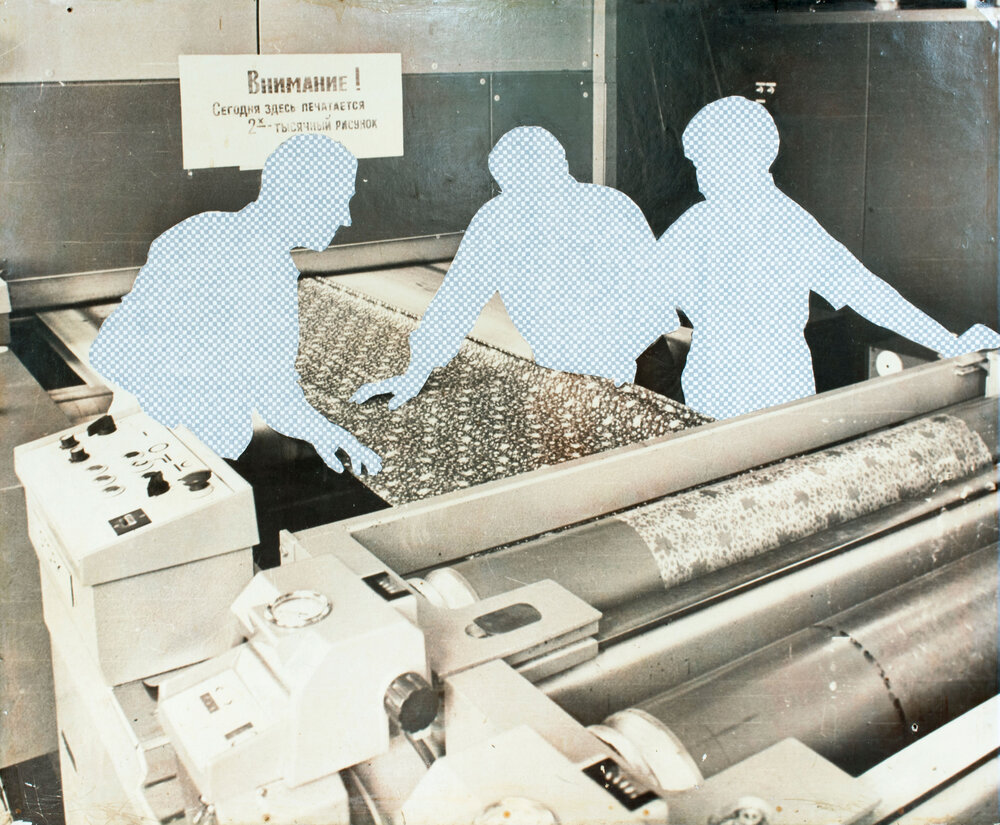
From the series Cutbacks by Maria Kapajeva, 2017. Courtesy the artist and the Gallery of Photography Ireland.
In response to COVID-19, artists, curators, institutions and organizations have initiated virtual exhibitions, presentations, screenings, and curated newsletters, among other innovative approaches, welcoming the public to online platforms and opening dialogues on a range of topics. May and June 2020 CWA Picks present a number of initiatives that not only demonstrate ways in which social media channels and websites can be repurposed in light of social distancing measures currently in place; but most importantly emphasize the social role of the arts being a healing positive force in these unprecedented challenging times. June Picks focus on the continued presence and significance of feminist art both independently and in conversation with each other, in the context of our current virtual living circumstance.
- Dream is Wonderful, Yet Unclear: an online exhibit of Maria Kapajeva considers the history of a community surrounding a textile mill in Narva, Estonia, now closed, where members of the artist’s family once worked. On view online May through June 2020, by Gallery of Photography Ireland.
- Artist video features by San Francisco Museum of Modern Art: Suzanne Lacy: Women Fight Back; Suzanne Lacy: We Are Here; Close Looking: The Artist Initiative with Vija Celmins; Vija Celmins: Saying the Unsayable; and Veja Celmins on her life in (and out of) the studio.
- White Chapel Gallery Artists’ Film International, since 2008, has premiered world-class artists from modern artists featuring Rosa Barba, Mwangi Hutter, Theresa Traore Dahlberg; Dominika Olszowy, Lisa Tan, Ailbhe Ní Bhriain; or Rhea Storr, Vika Kirchenbauer, Yu Gou and more on their YouTube channel.
- Michelle Handelman – BloodSisters: Leather Dykes and Sadomasochism: films and discussions in celebration of the 25 year anniversary of Michelle Handelman’s ground-breaking documentary, by the London BFI Flare 2020 Festival programmer Jay Bernard. The post-screening panel called BODILY AUTONOMY on the significance of Bloodsisters 25 years on–and current consent laws that restrict queer sexualities and subcultures also on view.
- Feminism is A Browser, a new film by Charlotte Eifler, was previewed online at the 58th Annual Ann Arbour Film Festival. The trailer can be viewed on vimeo here.
- Professional Organization for Women in the Arts is hosting ongoing online conversations around the arts during the COVID-19 crisis.
- Toward Freedom: A Progressive Perspective released a “Feminist emergency plan in the face of the Coronavirus crisis” in Chile by the Coordinadora Feminista 8M, a central force over the last five months of popular uprisings of millions of women.
- Johanna Unzueta: Tools for Life, a virtual exhibition by Modern Art Oxford.
- Google Art and Culture Online Feminist Exhibits: From large collections to smaller virtual exhibits, Google Art and Culture has several feminist and women-centered online offerings.
- Women Being Talks: the COVID-19 experience, a series of interviews by journalist Natalia Bonilla and WomenBeing Magazine Founder Monica Martins, through June.
- AIR Gallery’s Intimacy without Proximity, the collective of women-identified artists regularly shares resources, readings and prompts for communal making and thinking.
- Creative Mornings, a worldwide creative community, hosts free virtual zoom gatherings daily from locations across the globe.
- I Like Your Work podcast, hosted by artist and curator Erika b Hess, provides opportunities and resources centered around the weekly podcast interviews with creative people from painters and artists to collectors and curators.
Affiliated Society News for May 2020
posted by CAA — May 07, 2020
Affiliated Society News shares the new and exciting things CAA’s affiliated organizations are working on including activities, awards, publications, conferences, and exhibitions.
Interested in becoming an Affiliated Society? Learn more here.
Women’s Caucus for Art (WCA)
Historians of Netherlandish Art (HNA)
Call for Session Proposals for HNA Sponsored panel at CAA 2021:
HNA is seeking submissions for our sponsored panel at the College Art Association’s annual conference, which will be held February 10-13th, 2021, in New York City.
Proposals should address the session description:
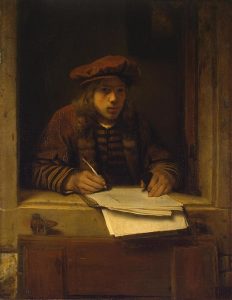
Samuel Dirksz van Hoogstraten, Self-portrait, late 1640s/1650, via Wikimedia Commons
Published in 1678, Samuel van Hoogstraten’s painting treatise, Inleyding tot de hooge schoole der schilderkonst, anders de zichtbaere wereld (Introduction to the Academy of Painting, or the Visible World), is simultaneously a pedagogical guide and a theoretical treatise on art, grounded in the painter’s practical knowledge. Written in the vernacular for an audience of Dutch artists, as well as collectors, connoisseurs, amateurs and lovers of art, Hoogstraten’s text has been mined by art historians for its conceptual vocabulary, classical referents, theories of optics and vision, and for its salacious anecdotes about Hoogstraten’s famous teacher, Rembrandt. This session seeks papers addressing the key themes of this heterogeneous text, and/or the multi-faceted career of its author, in honor of the 2020 publication of the first English translation of van Hoogstraten’s work by Celeste Brusati. Beyond the writings of van Hoogstraten, papers may address broader questions of artistic pedagogy and travel, artists’ writings, material knowledge and embodied practice, imitation and aesthetic judgment in the early modern Low Countries.
Please send proposals (ca. 250 words) and CVs to sporras@tulane.edu by May 10.
Association of Print Scholars (APS)
The Association of Print Scholars (APS) is pleased to award the third annual Collaboration Grant to Jennifer Chuong of Harvard University and Kailani Polzak of Williams College. The grant of $1,000 will support Imprinting Race, a two-day interdisciplinary event, planned for Fall 2020, that will include a keynote lecture, studio workshop, and roundtable discussion that will explore printmaking’s role in tangibly shaping and challenging ideas of racial difference during the long eighteenth century.
This year’s jurors also awarded an Honorable Mention in the amount of $500 to interdisciplinary artist and educator Trisha Gupta for her project, Build a Bigger Table, Not a Higher Wall. This event will include a lecture and woodblock printing demonstration for 150 participants of all ages and skill levels, who will participate in art-making activities using recycled textiles and paper as a means to explore the stories and traditions of immigrants from a diverse range of cultures.
The APS Collaboration Grant funds public programs and projects that foster collaboration between members of the print community through events like lectures, conferences, workshops, and other public programs. APS is currently accepting submissions for the 2021 Collaboration Prize (due January 31, 2021). For eligibility requirements and proposal submissions visit the APS website.
The Association of Print Scholars is additionally pleased to announce our 2021 CAA panel “The Graphic Conscience,” chaired by Dr. Ksenia Nouril, The Jensen Bryan Curator at The Print Center in Philadelphia. The session invites papers addressing transhistorical and transnational case studies of print as a tool for raising public consciousness.
Visual Resources Association News
The VRA international conference for image media professionals scheduled to take place at the Royal Sonesta Harbor Court Hotel in Baltimore from March 24-27, 2020, was cancelled due to the pandemic. Plans move forward for the next VRA conference to be held in Chicago in March 2021 and then Baltimore in 2022. The Annual Business Meeting was held virtually via Zoom on March 25th. Committees, task forces, and chapters also held meetings remotely during the conference week. Alternative ways to deliver the conference sessions and workshops are being explored, including publishing in the VRA Bulletin https://online.vraweb.org/index.php/vrab, the organization’s open access electronic journal of professional practice.
The Visual Resources Association is a multidisciplinary organization, founded in 1982, dedicated to furthering research and education in the field of image management within the educational, cultural heritage, and commercial environments. Since its foundation and even earlier, VRA has been affiliated with or had committee ties to CAA http://vraweb.org/.
The VRA Foundation (VRAF) continues to sponsor the Summer Educational Institute for Digital Stewardship of Visual Information (SEI), which is a joint project with the Art Libraries Society of North America (ARLIS/NA). This year it was scheduled to take place from June 23-26 at Northwestern University in Evanston, IL, but was also cancelled due to the COVID-19 outbreak. For more information, see https://vrafoundation.org/summer-educational-institute/ and if you have any additional questions, please contact SEI Co-Chairs Courtney Baron or Bridget Madden. Meanwhile, the VRAF continues its other initiatives, including regional workshops, professional development grants, project grants, and internship awards.
For more information about the important work and professional development activities sponsored by the Visual Resources Association or the VRA Foundation, please contact Maureen Burns, VRA’s CAA Affiliate Representative at moaburns@gmail.com or 310-489-3792.
BSA (Bibliographical Society of America)
1. Online instruction resources: To help teachers and scholars move forward in the midst of the current health crisis, the BSA website maintains an actively curated list of online instruction resources, including digital repositories for book history teaching, research, & more at https://bibsocamer.org/news/online-instruction-resources-digital-repositories-for-book-history-teaching-more/.
If you know of a resource that should be included, please email bsa@bibsocamer.org with the name and URL of the resource, and short description of what it offers.
2. Webinars: BSA is also offering free, forty-minute webinars throughout the spring 2020 season. Please find a complete list of online learning opportunities here https://bibsocamer.org/news/news-webinars-and-opportunities-for-mutual-aid/ and spread the word to your friends and colleagues. Registration required.
3. BSA Fellowships: To foster the study of books and other textual artifacts in traditional and emerging formats, and in keeping with the value which the Society places on the field of bibliography as a critical interpretative framework for understanding such artifacts, the BSA funds a number of fellowships designed to promote bibliographical inquiry and research. For more information see https://bibsocamer.org/awards/fellowships/. Deadline: 1 November 2020.
ATSAH (Association for Textual Scholarship in Art History)
ATSAH Recent Publications Additional – May 20, 2020
Lynette M.F. Bosch, Professor of Art History and Distinguished Professor at SUNY, Geneseo
Lynette M. F. Bosch, Mannerism, Spirituality and Cognition: The Art of Enargeia, Routledge Press, 2020.
Lynette M. F. Bosck, Demi, Skira Press, 2019.
Charles Burroughs, Professor of Art History at SUNY, Geneseo
Charles Burroughs, “Honour, Classical Architecture, and the Issue of Slavery.” In The Oxford Handbook of the Reception of the Classical Tradition in Architecture, ed. Nicholas Temple, Andrzej Piotrowski, and Juan Heredia (Oxford University Press, 2019), 151-163.
Charles Burroughs, “Mannerism and Architecture: Varieties of Extraordinary in Serlio’s Extraordinary Book.” In Readings on Italian Mannerism II: Architecture and Sculpture, ed. Liana de Girolami Cheney (Peter Lang Publishing, Berlin and New York, 2020), 139-52.
Deborah H. Cibelli, Professor of Art History, Nicholls State University
Deborah H. Cibelli, “Beardsley’s ‘Strife for Love in a Dream'”, in Anxiety, Angst, Anguish in Fin de Siècle Art and Literature, eds. Rosina Neginsky, Marthe Segrestin, and Luba Jurgenson. Newcastle upon Tyne, United Kingdom: Cambridge Scholars Publishing, 2020.
Liana De Girolami Cheney, Professor of Art History (emerita) UMASS Lowell
Liana De Girolami Cheney, “Lavinia Fontana’s Galatea: Personification of Fortune and Venus”
The Journal of Literature and Art Studies vol. 10. no. 1 (January 2020): 42-59.
Liana De Girolami Cheney, “Giorgio Vasari’s Neptune as Cosimo I de’ Medici: The Element of Water as a Political Symbol,” in The Iconography of Water, ed. Pilar Diez del Coral (Lisbon: University of Lisbon, CHAM, 2020), 30-45.
Liana De Girolami Cheney, “Interplay of Grotesques in Giorgio Vasari and Cristofano Gherardi,” in Between Allegory and Natural Philosophy. New Perspectives on Renaissance Grotesques, ed . Damiano Acciarino, Università Ca’ Foscari Venezia and University of Toronto (Fall 2019), 297-330.
Massimiliano Rossi, Professor of Art History, University of Salerno, Italy
2019
La fortuna figurativa del poema epico-cavalleresco, in Letteratura e arti visive nel Rinascimento, a cura di Gianluca Genovese e Andrea Torre, Roma, Carocci, 2019, pp. 261-281.
Vero e falso nella decorazione effimera tra Cinque e Seicento in Veneto: materia e immaginazione all’origine di un canone eccentrico, in The Gentle Art of Fake. A Conference on Copies, Fakes and Appropriations in Contemporary Arts, Milano, Accademia di Brera – Università IULM, 15-16 gennaio 2019, a cura di Tommaso Casini e Laura Lombardi, Cinisello Balsamo (MI), Silvana Editoriale, 2019, pp. 223-231.
2020
L’Elogio dell’Abate Cortenovis: una lezione di metodo lanziano, in Luigi Lanzi a Udine 1796-1801. Storiografia artistica, cultura antiquaria e letteraria nel cuore d’Europa, Convegno di Studi, Udine, 21-23 novembre 2018, a cura di Paolo Pastres, Firenze, Olschki, 2020, pp. 133-145.
Ecfrasi epica e celebrazione dinastica in Bracciolini, tra Bernini e i Barberini, in Francesco Bracciolini. Gli «ozi» e la corte, Introduzione di Maria Cristina Cabani, a cura di Federico Contini e Andrea Lazzarini, Pisa, PUP, 2020, pp. 323-342.
Rosina Neginsky, President of ALMSD, University of Illinois
“Anxiety in Redon’s Works: The Invention of a New Visual Language.” in Anxiety, Angst, Anguish in the Fin de Siècle Art and Literature, edited by Rosina Neginsky, Marthe Segrestin, and Luba Jurgenson. Newcastle upon Tyne, United Kingdom: Cambridge Scholars Publishing, 2020.
New in caa.reviews
posted by CAA — Mar 27, 2020
B. Deniz Çalış Kural considers the book Ottoman Baroque: The Architectural Refashioning of Eighteenth-Century Istanbul by Ünver Rüstem. Read the full review at caa.reviews.
Valérie Kobi discusses Charlotte Guichard’s La griffe du peintre: La valeur de l’art (1730–1820). Read the full review at caa.reviews.
Itay Sapir writes about The Neapolitan Lives and Careers of Netherlandish Immigrant Painters (1575–1655) by Marije Osnabrugge. Read the full review at caa.reviews.



